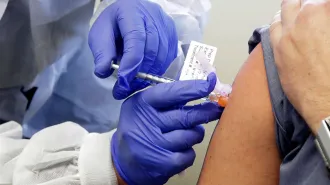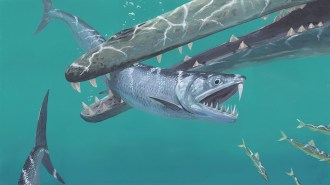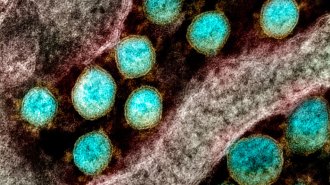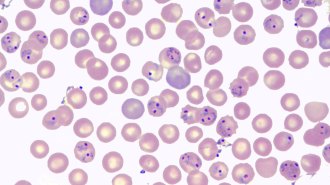Uncategorized
-
 Health & Medicine
Health & MedicineModerna’s COVID-19 vaccine stimulates an immune response in people
An mRNA vaccine triggers the immune system to make as many virus-blocking antibodies as in people who have recovered from COVID-19, early data show.
-
 Chemistry
ChemistryAstronauts may be able to make cement using their own pee
Lunar dust and a compound found in urine could be used to build future dwellings on the moon, a new study finds.
-
 Science & Society
Science & SocietyPast plagues offer lessons for society after the coronavirus pandemic
Starting with the Roman Empire, societies have often dealt resiliently with deadly pandemics.
By Bruce Bower -
 Paleontology
PaleontologySaber-toothed anchovy relatives hunted in the sea 50 million years ago
Unlike today’s plankton-eating anchovies with tiny teeth, ancient anchovy kin had lower jaw of sharp spikes paired with a single giant sabertooth.
-
 Health & Medicine
Health & MedicineT cells may help COVID-19 patients — and people never exposed to the virus
Researchers found certain immune cells that help the body fight off an infection in the blood of people who recovered from a coronavirus infection.
-
 Chemistry
ChemistryMoisture, not light, explains why Munch’s ‘The Scream’ is deteriorating
Edvard Munch’s 1910 “The Scream” is famous for its loud colors. New insight into paint preservation could keep those pigments from fading out.
-
 Archaeology
Archaeology50 years ago, explorer Thor Heyerdahl’s Atlantic crossing hit a snag
Explorer Thor Heyerdahl followed an aborted Atlantic voyage with a second trip that indicated ancient Egyptians could have traveled over long distances by sea.
By Bruce Bower -
 Climate
ClimateThese 6 books explore climate change science and solutions
Science News staff read recent books about climate change to help guide you to which ones you might like.
-
 Humans
HumansMalaria parasites may have their own circadian rhythms
Plasmodium parasites don’t depend on a host for an internal clock, studies suggest.
By Jake Buehler -
 Earth
EarthLong-dormant volcano Mauna Kea has been quietly grumbling for decades
Small, periodic earthquakes have happened every seven to 12 minutes for decades, but aren’t reason for alarm, a new study finds.
-
 Anthropology
AnthropologyAfrica’s biggest collection of ancient human footprints has been found
Preserved impressions in East Africa offer a glimpse of ancient human behavior.
By Bruce Bower -
 Neuroscience
NeuroscienceBlind people can ‘see’ letters traced directly onto their brains
Arrays of electrodes can trace shapes onto people’s brains, creating bursts of light that people can “see.”